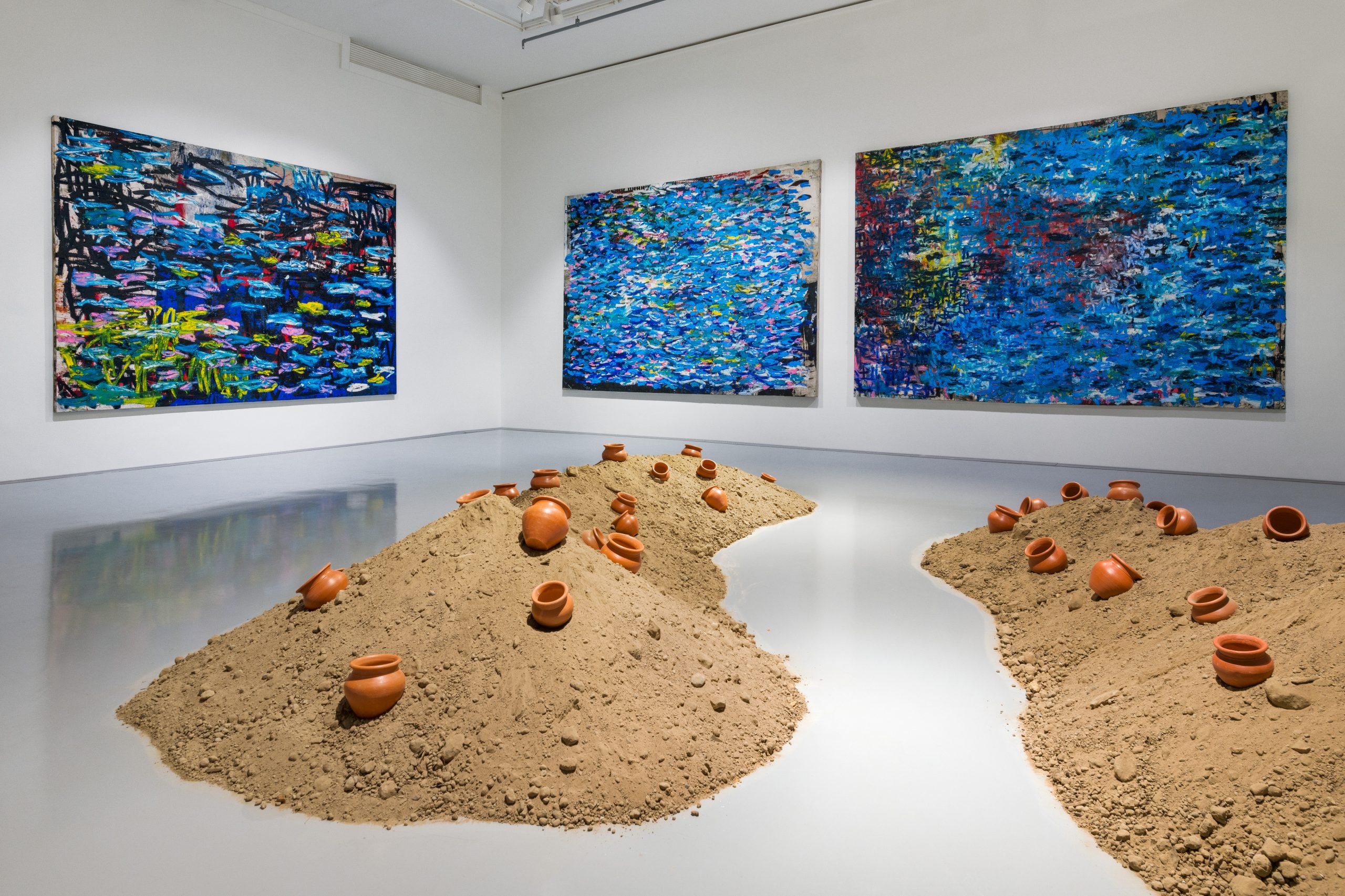Museum exhibitions are rarely warm — neither in the degree of heat nor homely reception — but as I entered the second floor of the grain silos at Zeitz Mocaa, a sense of warmth engulfed me.
From the sweet and tangy smell of citrus in Thania Petersen’s Rampies Sny (2022), the tender voices recorded in Luvuyo Equiano Nyawose’s eBhish archive and the vivid colour in Malala Andrialavidrazana’s historical montages — the visual, olfactory and the sonic amass, anchoring a meditative environment.


An experiment in oceanic thinking, “Indigo Waves and Other Stories: Re-Navigating the Afrasian Sea and Notions of Diaspora” reflects on the histories, politics, economies and cultures along the Afrasian Sea. Curated by art historians Natasha Ginwala and Bonaventure Soh Bejeng Ndikung, with Michelangelo Corsaro and the Zeitz Mocaa curatorial team, the exhibition brings together thirteen artists who, through different modes, engage with the Indian ocean. The exhibition, particularly through the connection between Africa and Asia, suggests a different investigation of sites of struggle and possibilities for the collapse of power and a de-entangling from the clutches of empire.
“Indigo Waves and Other Stories…” offers the Indian Ocean as a spine from which to consider multiple histories — thinking of the ocean as having its own intelligence and soul. The curators reflect on the Afrasian Sea as a “communal horizon” leading us to trails and pathways that connect us across seas. The horizon, of course, is often considered a guide – a navigational and orienting tool (Steyerl). But the horizon also necessarily points us towards the sea as a shaky, dangerous, hazardous, perilous, and risky place — perhaps not removed from the very real precarity we face on our dry ground.

Within this exhibition, it is crucial that the title references a “(re)-navigation” of the seas. More than just lexical semantics, this particularity is not premised on discovery (reflecting a colonial mentality) but instead points us to a re-examination and re-consideration of what already exists — “again” or “again and again”. Through this inquiry, the curators gesture at the possibilities of re-imagining and re-worlding — be it through Oscar Murillo’s critique of the cloudy and often violent lens through which we view the world or the Myriam Omar Awadi’s consideration of a social space-time where gender is constantly questioned.
In Awadi’s multimedia installations, loosely translated as Lullaby to the Patriarchy/ Penis also Crying, fresh clay, glass, pillows and a sex toy act as remnants of song, dance and radical expressions of sexuality. The work reads like an investigation into transgressions and transgressive stories.





















































